Kua Mee is a Lao stir-fried noodle dish caramelized in sweet soy sauce, often considered the country’s answer to Pad Thai. With its unique sweetness and ideal caramelization, this dish is a popular street food and a party favorite throughout Lao and Isaan cultures. Vegetarian friendly!
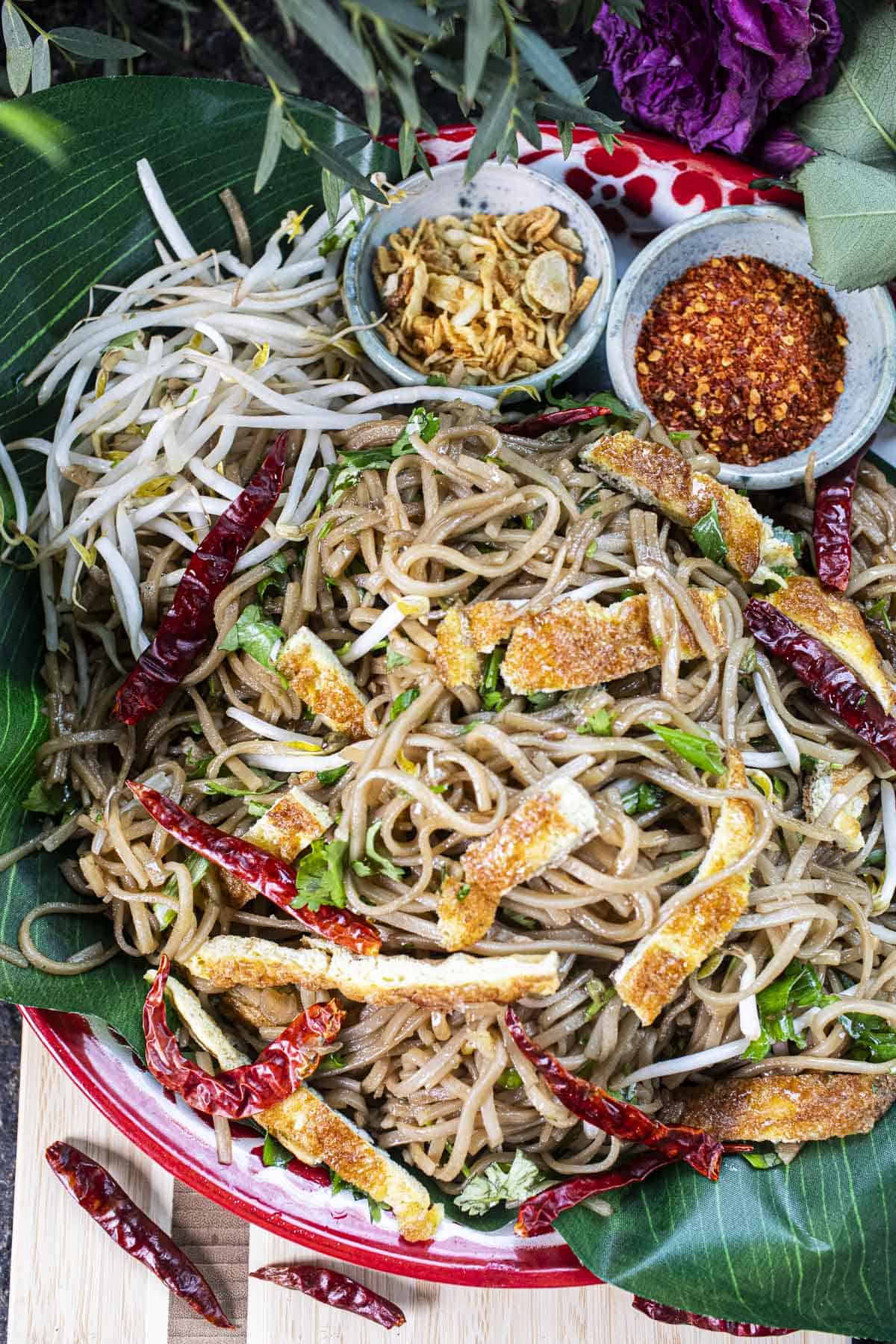
For more noodles recipe, enjoy my Pad Mee Korat, Vegetarian Pad Thai, Pad mee, rice vermicelli stir fry and beef pad Thai.
For even more variety, check out my Pad Mee for a simpler option, or heat things up with Pad Mee Korat. If you love Pad Thai, explore my shrimp, beef, or vegetarian Pad Thai versions—each with its own bold character and guaranteed to please!
Why I Love Kua Mee
I grew up eating Kua Mee more often than Pad Thai, thanks to my family’s Lao heritage and our life in Isaan—a region in Thailand with strong ties to Laos. At Lao parties, major community events, festivals, and religious celebrations, I remember the aroma of garlic and noodles sizzling in a hot wok as the women in my village expertly prepared these fried noodles for everyone to enjoy.
Years later, tasting Kua Mee in the streets of Luang Prabang reminded me of home. That same authentic flavor and comforting simplicity is what I’m excited to share with you today.
What is Kua Mee?
Kua Mee, or Pad Lao, is a Lao-style stir-fried noodle dish made with rice noodles, a sweet-savory soy-based sauce, and fresh garnishes like bean sprouts and green onions. It’s often served at Lao parties or family gatherings, thanks to its practicality for feeding large crowds. The cooking process involves creating a perfect balance of flavors—sweet soy sauce, and umami-rich fish sauce—all brought together in a wok over high heat. This dish is a must-try and delivers the comfort of authentic Lao noodles right to your table.
Think of it as Lao cuisine's beloved equivalent of Pad Thai, bringing the comfort of authentic Lao noodles right to your table.
Why You’ll Love Kua Mee (Pad Lao)
- Great party food. It can be left at room temperature for a longer time, it's a great dish to bring to a pot luck or a dinner party.
- Quick and Easy: Ready in under 30 minutes, perfect for busy weeknights
- Unique Sweetness: Achieved through the caramelized sugar in the sauce.
- Customizable: Adjust the flavors to your liking with more soy sauce, , or spice.
- Family-Friendly: Great for both vegetarian and non-vegetarian preferences with optional eggs or tofu.
Ingredients for Kua Mee Recipe
These key ingredients ensure authentic flavor and versatility. Read more about Thai pantry essentials here.
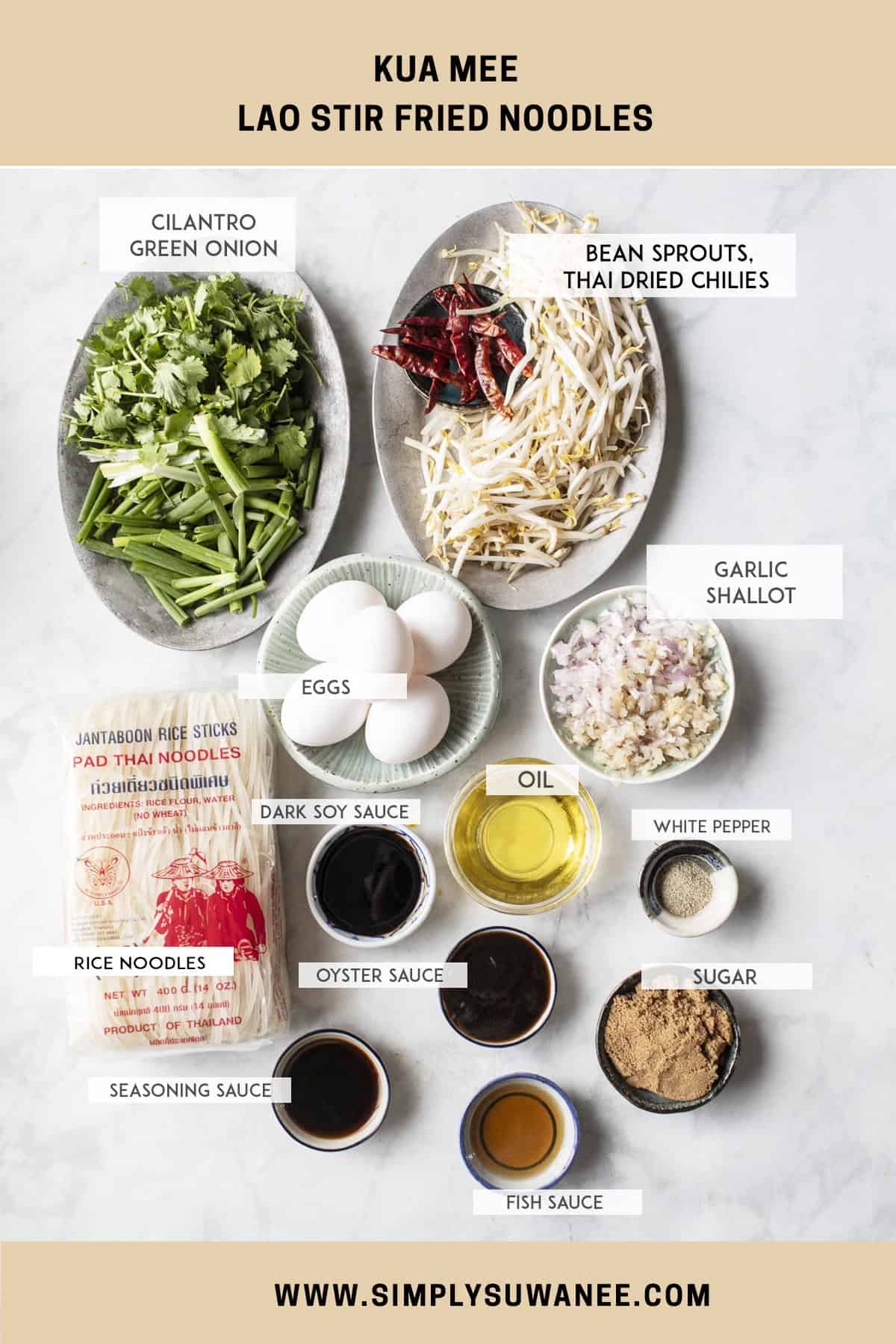
- Rice Noodles: Pho noodles are ideal for soaking up the sauce. Make sure they’re drained well to get the perfect texture. Read more about different types of Thai noodles here.
- Seasoning Sauce & Ground Pepper: Season with a splash of seasoning sauce and a pinch of white or black pepper to brighten all the flavors.
- Fish Sauce & Sweet Soy Sauce: Fish sauce adds savory depth, while sweet soy sauce brings a touch of sweetness and that beautiful deep brown color to the noodles. Read more about Thai sauces here.
- Oyster Sauce & Sugar (Brown or Palm Sugar): Oyster sauce adds rich umami and brown/palm sugar to help caramelize the dish for a unique sweet note. If you don’t have palm sugar, use brown or white sugar.
- Garlic and Shallots: These aromatics lay the foundation for the dish’s savory flavor.
- Eggs: Fry them until firm and slightly crispy—they’ll add both texture and richness.
- Green Onions, Cilantro, & Bean Sprouts: The final dish features a handful of fresh greens and crunchy bean sprouts, which add brightness and crunch.
- Oil. Use a high-smoke-point oil like avocado, canola, rice bran, or vegetable oil. Coconut oil is a great alternative if you prefer.
How to Make Kua Mee (Pad Lao)
Step 1: Prepare the Noodles. Soak or cook the rice noodles according to the package instructions, then set them aside. See notes for cooking tips.
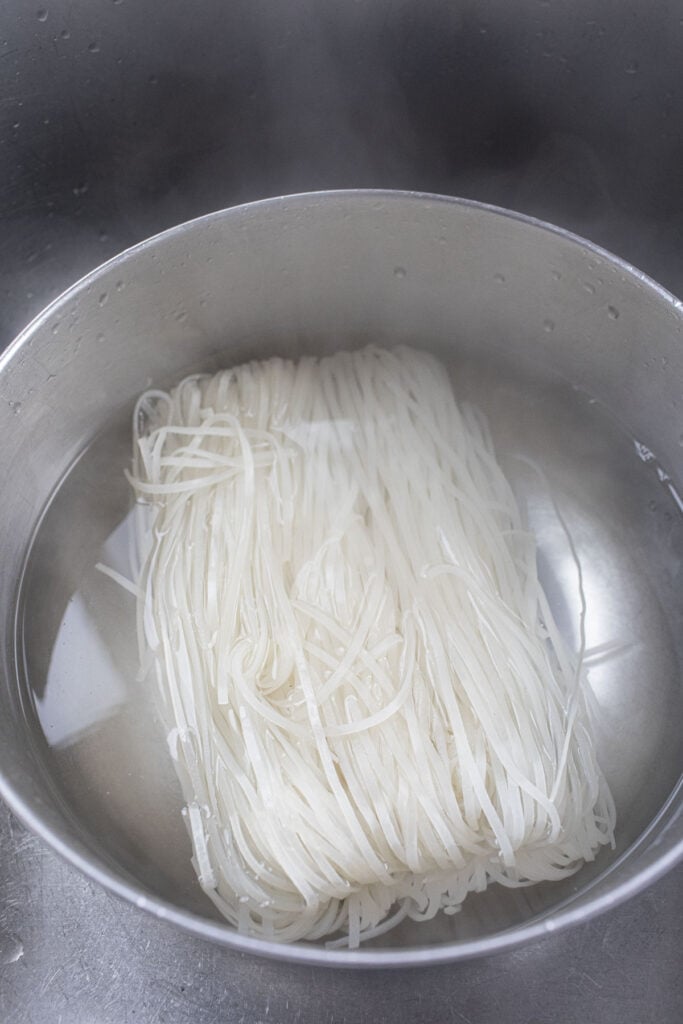
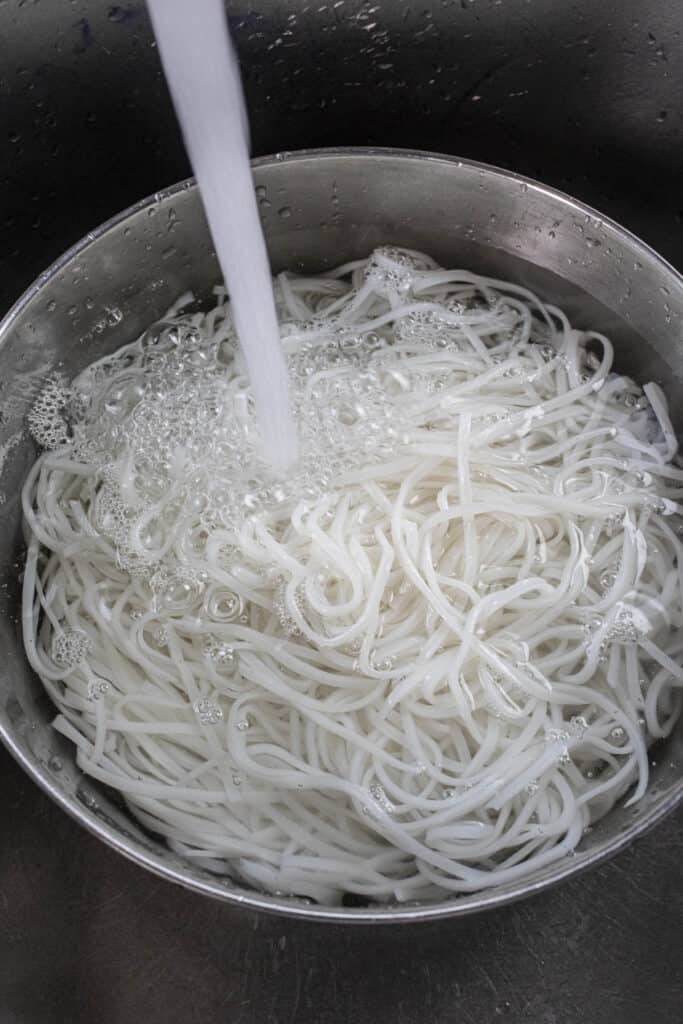
Step 2: Cook the Eggs. Whisk together the eggs, ground pepper, and seasoning sauce in a bowl until fully combined. Heat 2 tablespoons of oil in a pan over medium-high heat. When hot, pour in the egg mixture and let it spread into a thin, pancake-like layer. Do not break or touch it as it cooks. When the bottom is golden, carefully flip the egg to cook the other side, which will take less time. Remove from the heat and let it cool. Set aside.
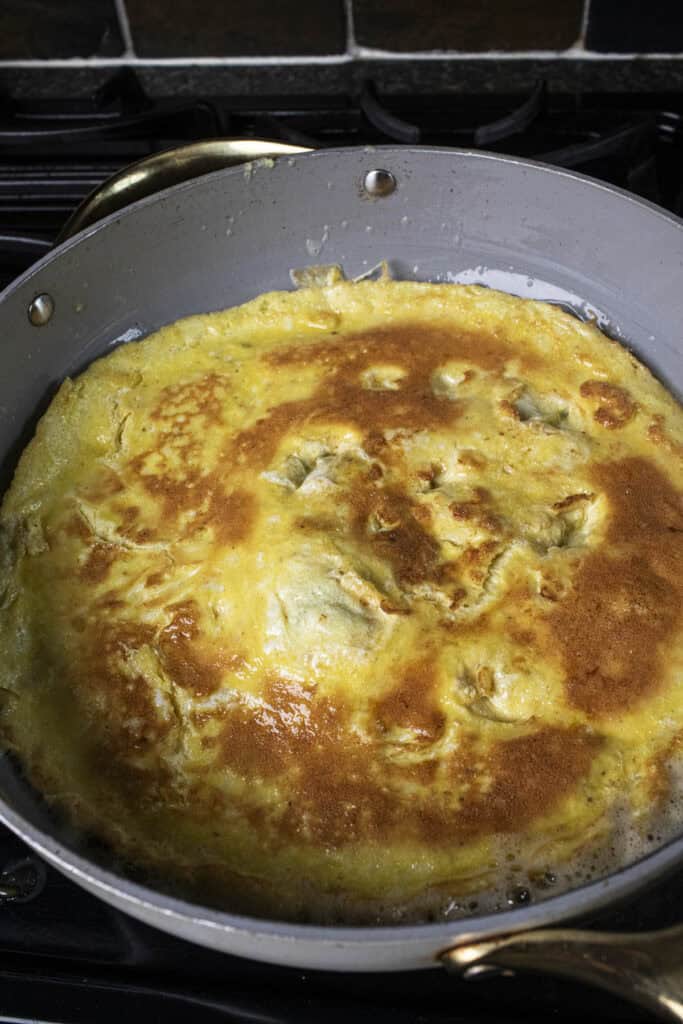
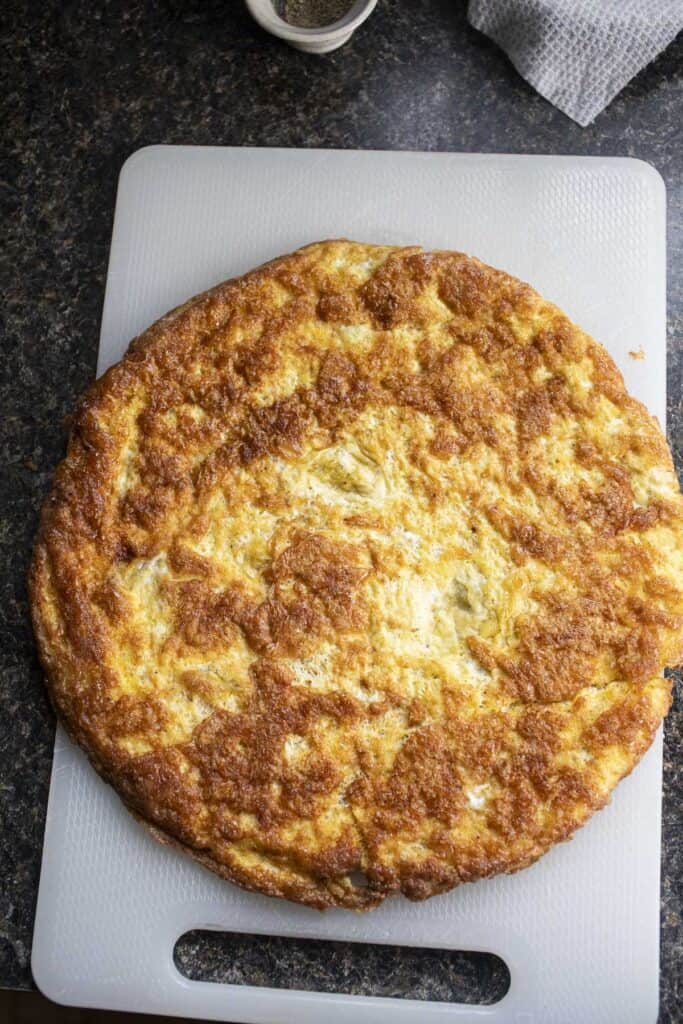
Step 3: Stir-Fry Aromatics. Heat a bit of oil in a wok over medium heat. Add garlic and shallots, and stir-fry until fragrant.
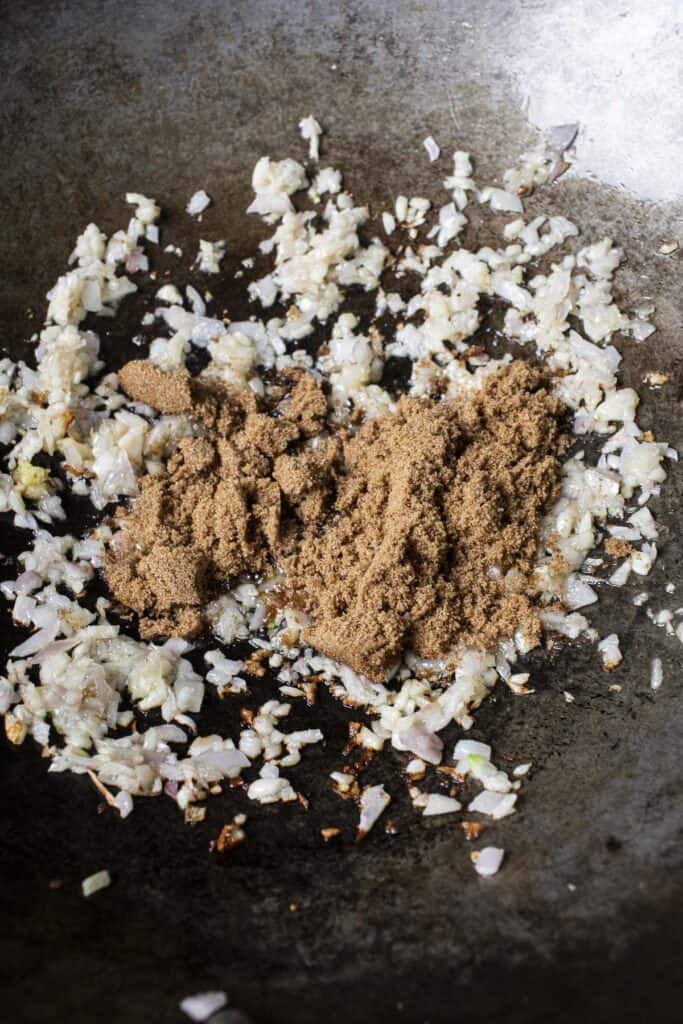
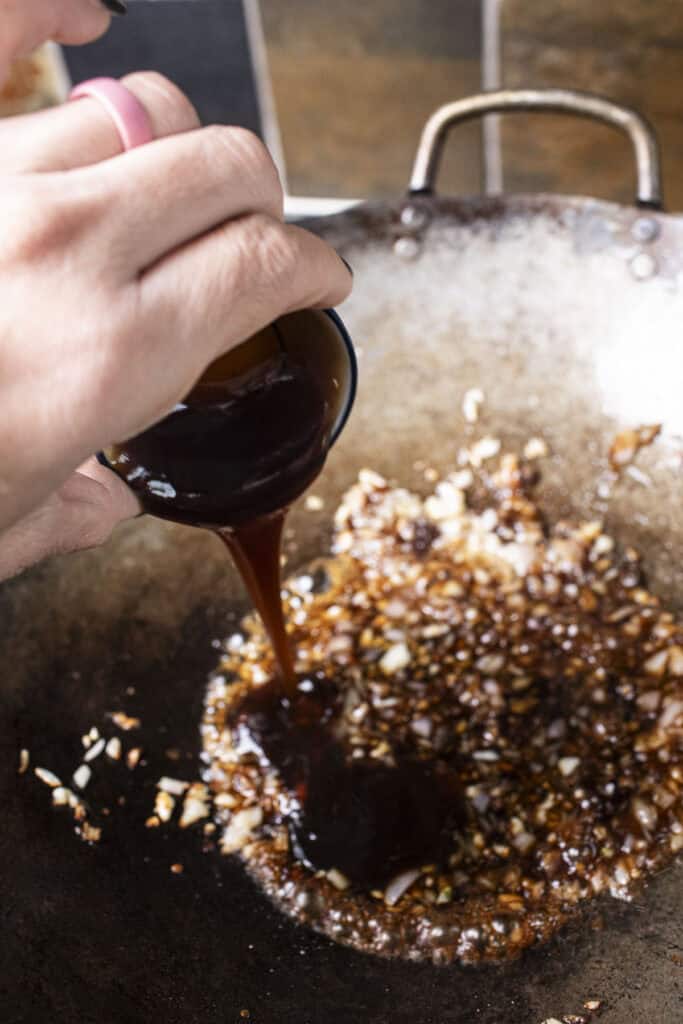
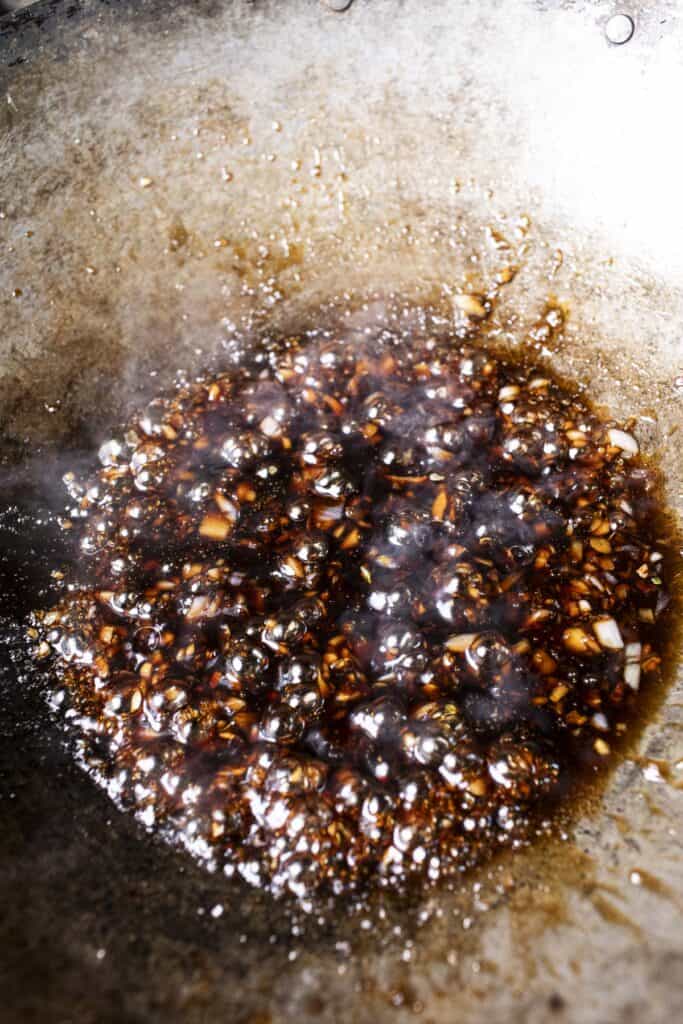
Step 4: Make the Sauce. Add the sugar, sweet soy sauce, oyster sauce, fish sauce, and golden mountain seasoning sauce. Let it simmer until the sugar dissolves and thickens to develop a rich, caramelized color. Adjust the taste as needed.
Step 5: Add the Noodles. Turn the heat to medium-high, toss the drained noodles into the wok, and stir-fry until they’re evenly coated with the sauce. Transfer the noodles to a large platter and let cool.
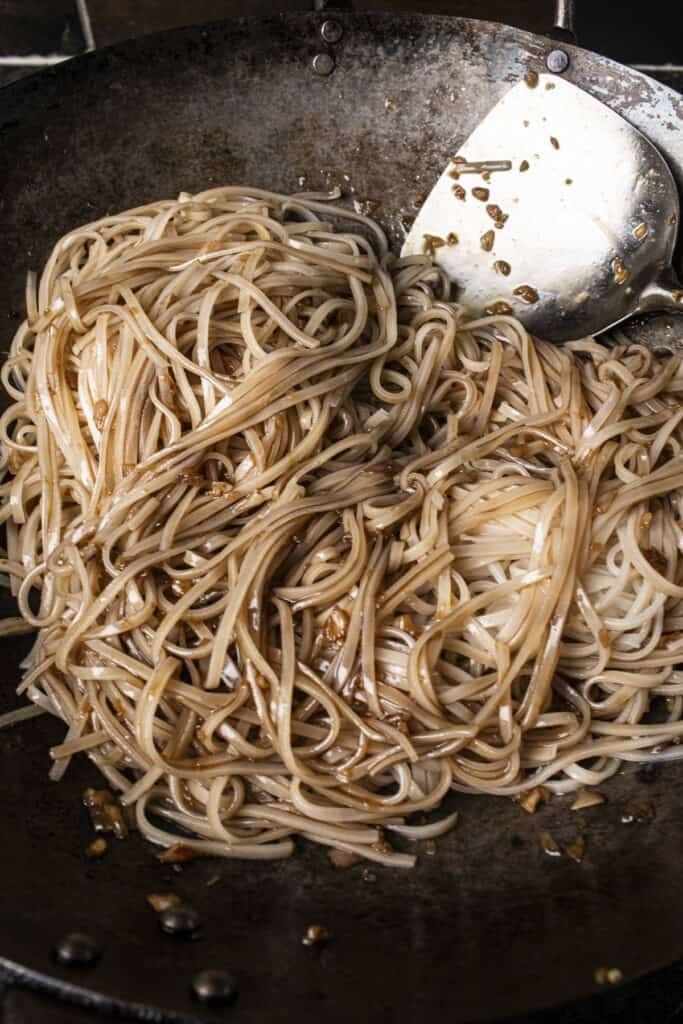
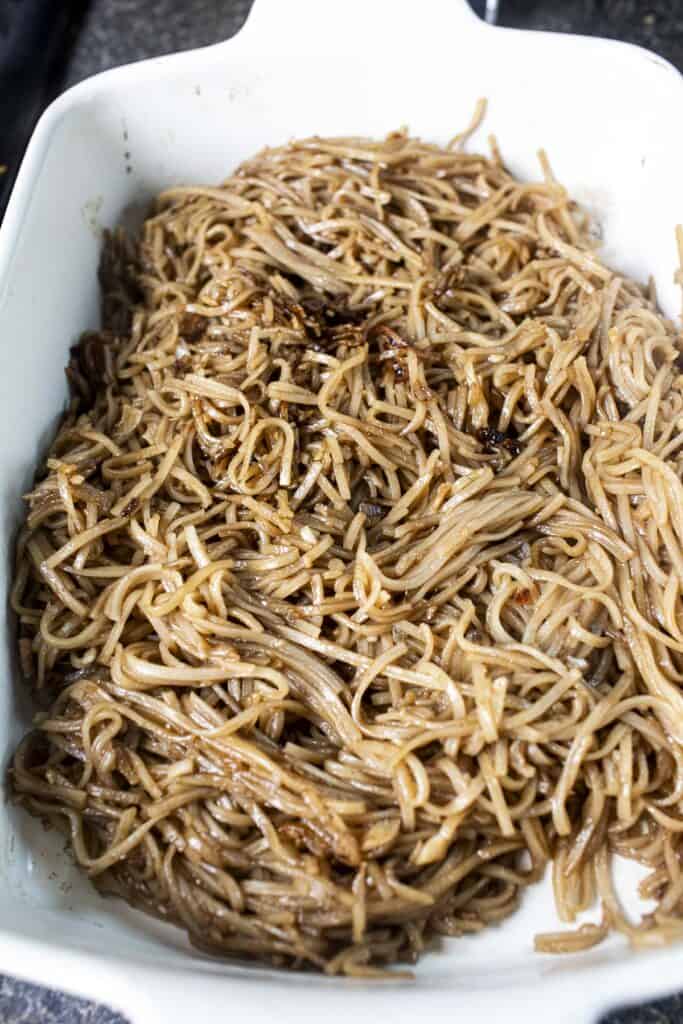
Step 6: Slice Eggs & Prep Garnishes. Once the eggs have cooled, slice them into thin, long strips. Roughly chop cilantro and green onion into small pieces. Toast some dried chilies for extra heat, and leave them whole to control the spice level. Or not. (:
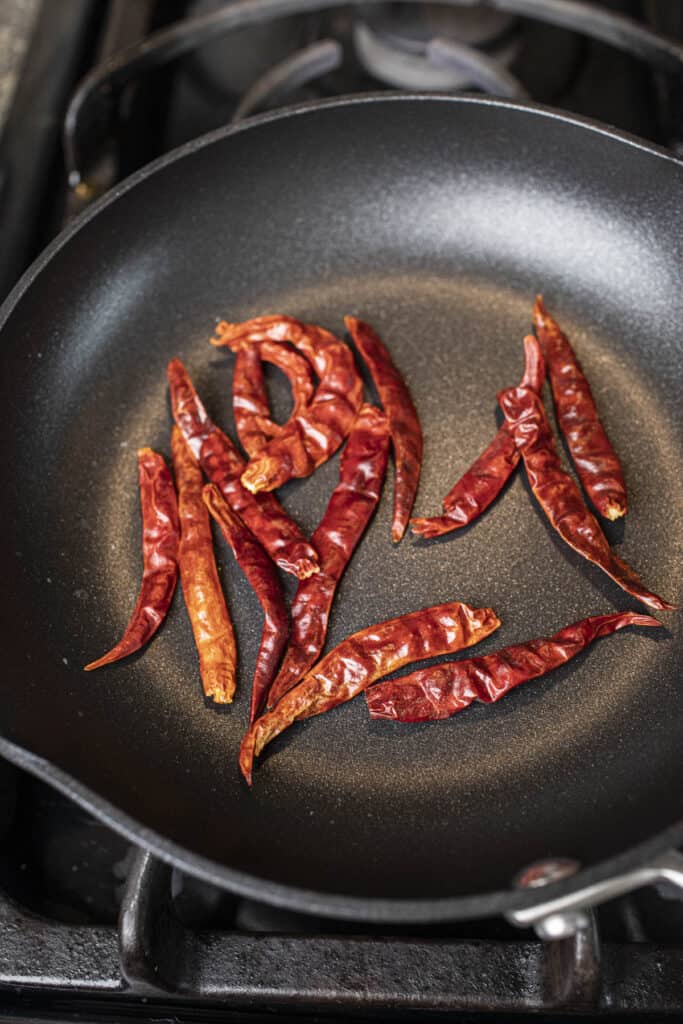
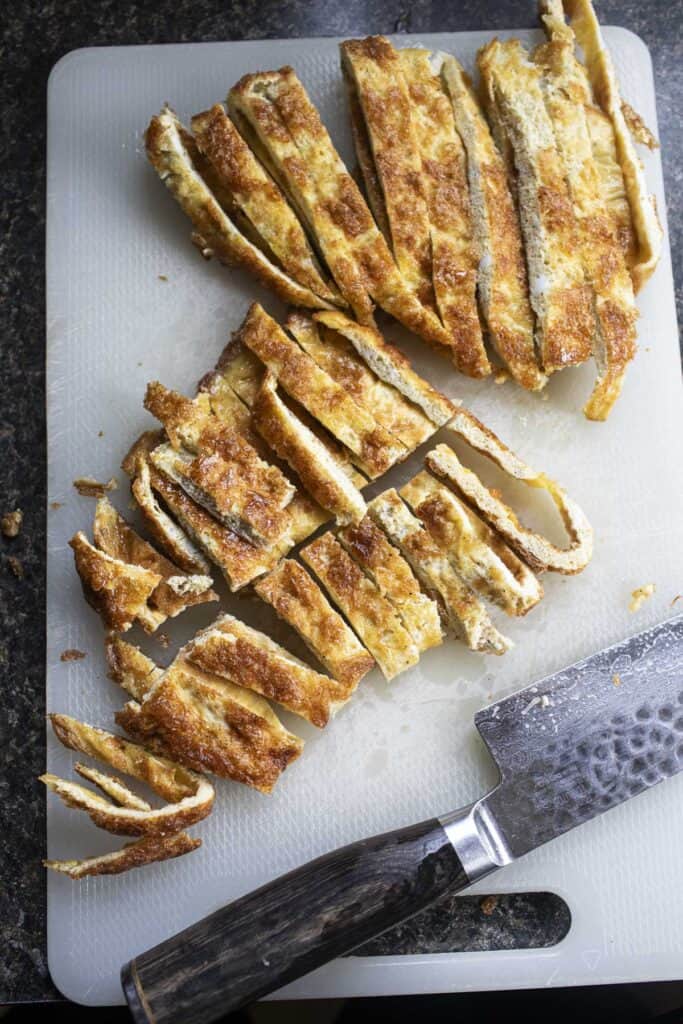
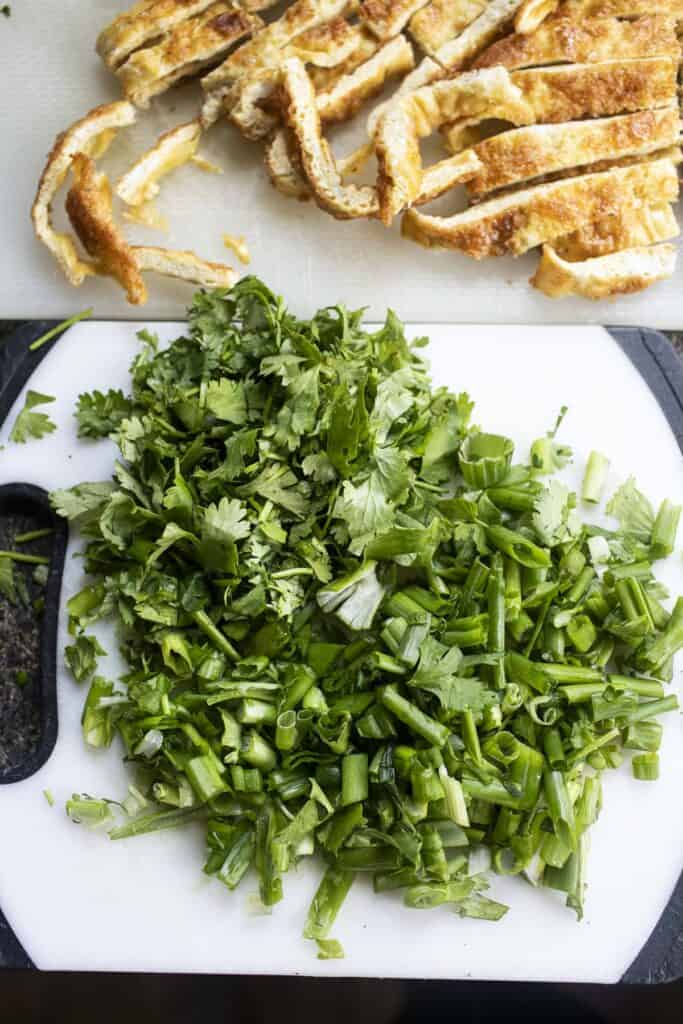
Step 7: Combine Everything. When the noodles have cooled, gently mix the sliced eggs, bean sprouts, green onions, chopped herbs, and toasted chilies. Using kitchen gloves helps!
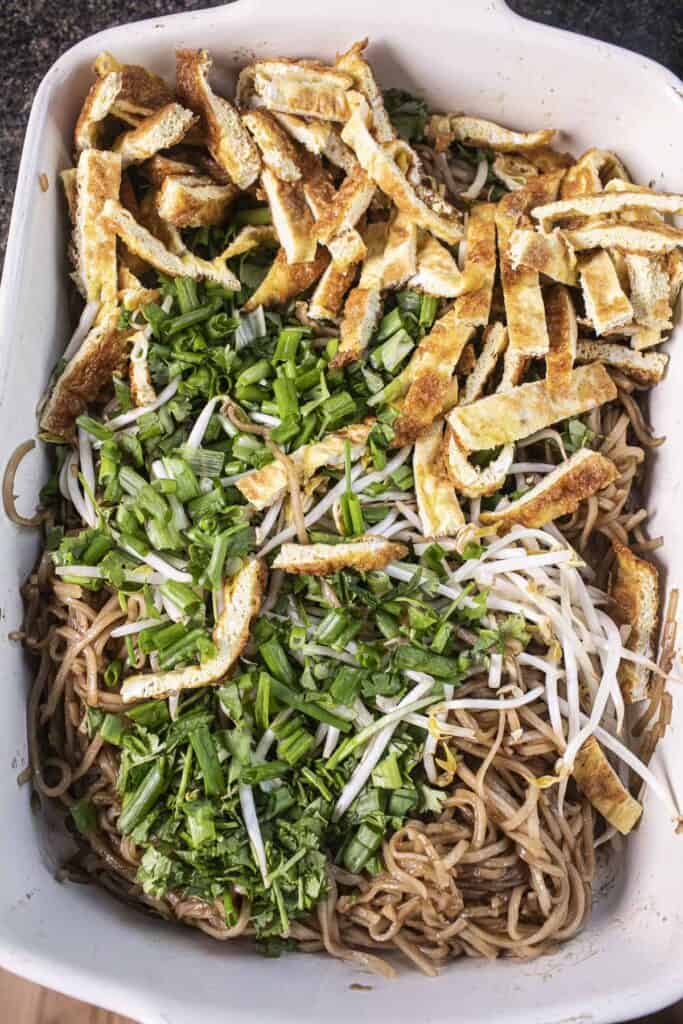
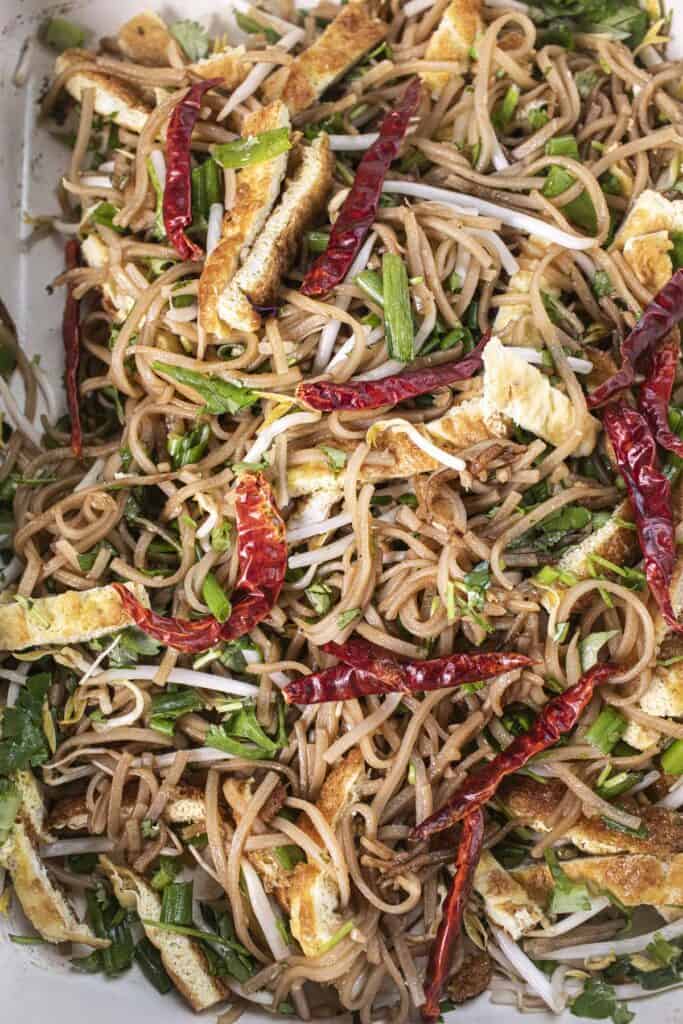
Step 8: Serve. Plate the finished Kua Mee and garnish with a little more fresh herbs, lime wedges, fried garlic or shallot, and a sprinkle of chili flakes. Enjoy!
Kitchen Tips for the Best Kua Mee
- Noodle Prep: If you soak your noodles in hot water, drain them well and then quickly rinse with cold water. This halts the cooking process and keeps them pleasantly al dente.
- Caramelization Process Matters: Kua Mee shines when the sauce is caramelized, which means letting it cook until it thickens and deepens in flavor. Keep a close eye on it, though—sugar can burn fast!
- High Heat: Using high heat in your wok helps achieve that signature smoky flavor.
- Sweet Soy Sauce: This is the key ingredient for the dish’s unique sweetness. Look for sweet soy sauce at your local Asian market—just make sure you don’t confuse it with regular black soy sauce, which isn’t sweet. Happy cooking!
Storing Kua Mee
- Refrigerator: Seal leftovers in an airtight container and keep them for up to 2 days. Reheating: Add a splash of water and warm them over medium heat on the stovetop.
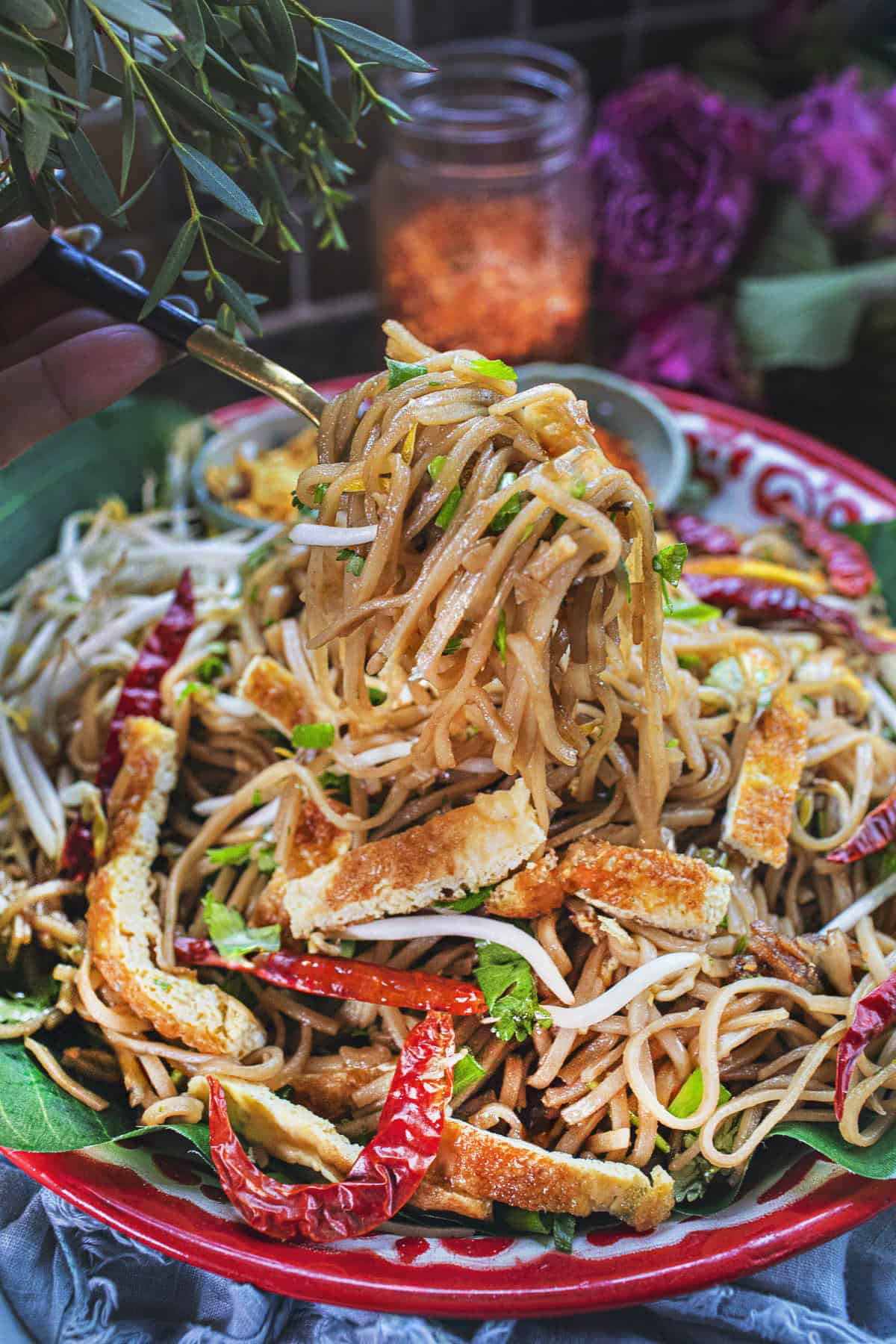
More Recipes from Simply Suwanee
- Pad mee Korat
- Vegetarian Pad Thai
- Lao Papaya Salad
- Pad See Ew (Thai Stir-Fried Noodles)
- Pork belly stir fry with Chinese broccoli.
Frequently Asked Questions
You can leave it out for about 3–4 hours. Just keep it covered to maintain freshness and avoid any food safety issues.
Absolutely. Skip the eggs and use tofu or another plant-based protein. Replace oyster sauce with tamari or mushroom soy sauce.
Kua Mee is sweeter, uses caramelized sugar, and generally comes with fewer garnishes. Pad Thai, on the other hand, incorporates tangy tamarind paste and often has a more complex flavor profile.
The rice noodles themselves are gluten-free, but the sauces typically aren’t. If gluten is a concern, be sure to check sauce ingredients for gluten-free options.
**Love this recipe? Please leave a 5-star rating in the recipe card below and share your experience in the comments! Follow me on Facebook, Pinterest, or Instagram!**
Print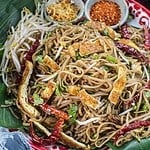
Kua Mee (Pad Lao)
- Total Time: 40 minutes
- Yield: 8 servings
- Diet: Vegetarian
Description
Kua Mee is a Lao stir-fried noodle dish caramelized in sweet soy sauce, often considered the country’s answer to Pad Thai. With its unique sweetness and ideal caramelization, this dish is a popular street food and a party favorite throughout Lao and Isaan cultures.
Ingredients
- 16 ounces dried rice noodles (20 ounces fresh noodles. Pho noodles are ideal for soaking up the sauce. Prepare according to package instructions to get el dente noodles.
- ⅓ cup oil, divided. * 2 tablespoons for the omelet and the rest for frying the noodles. Use a high-smoke-point oil like avocado, canola, rice bran, or vegetable oil.
- 5 large eggs
- ¼ teaspoon ground pepper. White or black, I prefer white.
- ¼ cup garlic, minced
- ⅓ cup shallots, chopped into small pieces.
- ⅓ cup sugar. Brown or palm sugar or white sugar.
- 3 tablespoons Golden Mountain seasoning sauce, divided. *1 tablespoon for seasoning the eggs and the rest for the noodles.
- 3 tablespoons sweet soy sauce
- 3 tablespoons oyster sauce
- 2 tablespoons fish sauce
- ⅔ cup green onions, rough chopped
- ⅔ cup cilantro, rough chopped
- 1.5 cups bean sprouts
Instructions
- Step 1: Prepare the Noodles. Soak or cook the rice noodles according to the package instructions, then set them aside. See notes for cooking tips.
- Step 2: Cook the Eggs. Whisk together the eggs, ground pepper, and seasoning sauce in a bowl until fully combined. Heat 2 tablespoons of oil in a pan over medium-high heat. When hot, pour in the egg mixture and let it spread into a thin, pancake-like layer. Do not break or touch it as it cooks. When the bottom is golden, carefully flip the egg to cook the other side, which will take less time. Remove from the heat and let it cool. Set aside.
- Step 3: Stir-Fry Aromatics. Heat a bit of oil in a wok over medium heat. Add garlic and shallots, and stir-fry until fragrant.
- Step 4: Make the Sauce. Add the sugar, sweet soy sauce, oyster sauce, fish sauce, and golden mountain seasoning sauce. Let it simmer until the sugar dissolves and thickens to develop a rich, caramelized color. Adjust the taste as needed.
- Step 5: Add the Noodles. Turn the heat to medium-high, toss the drained noodles into the wok, and stir-fry until they’re evenly coated with the sauce. Transfer the noodles to a large platter and let cool.
- Step 6: Slice Eggs & Prep Garnishes. Once the eggs have cooled, slice them into thin, long strips. Roughly chop cilantro and green onion into small pieces. Toast some dried chilies for extra heat, and leave them whole to control the spice level. Or not. (:
- Step 7: Combine Everything. When the noodles have cooled, gently mix the sliced eggs, bean sprouts, green onions, chopped herbs, and toasted chilies. Using kitchen gloves helps!
- Step 8: Serve. Plate the finished Kua Mee and garnish with a little more fresh herbs, lime wedges, fried garlic or shallot, and a sprinkle of chili flakes. Enjoy!
Notes
- Noodle Prep: If you soak your noodles in hot water, drain them well and then quickly rinse with cold water. This halts the cooking process and keeps them pleasantly al dente.
- Caramelization Process Matters: Kua Mee shines when the sauce is caramelized, which means letting it cook until it thickens and deepens in flavor. Keep a close eye on it, though—sugar can burn fast!
- High Heat: Using high heat in your wok helps achieve that signature smoky flavor.
- Sweet Soy Sauce: This is the key ingredient for the dish’s unique sweetness. Look for sweet soy sauce at your local Asian market—just make sure you don’t confuse it with regular black soy sauce, which isn’t sweet. Happy cooking!
- Prep Time: 15
- Cook Time: 15
- Category: Noodles
- Method: Stir fry
- Cuisine: Lao
Related
Looking for other recipes like this? Try these:

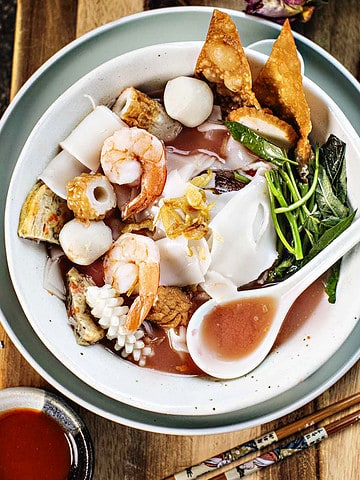
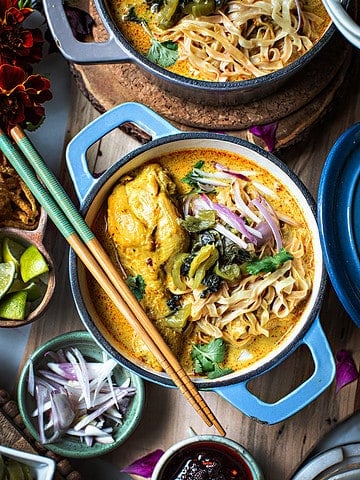
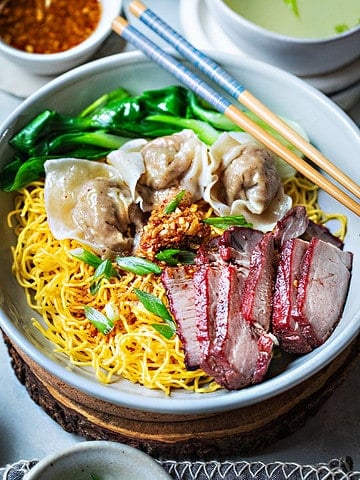
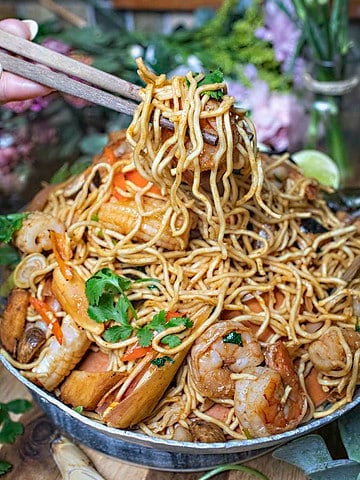
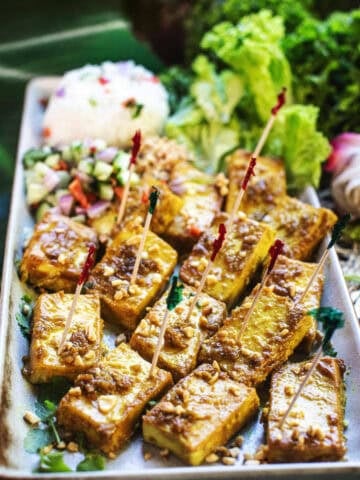
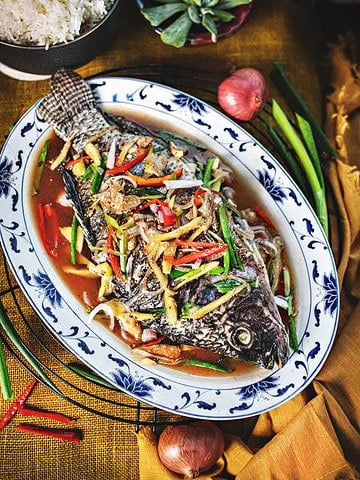
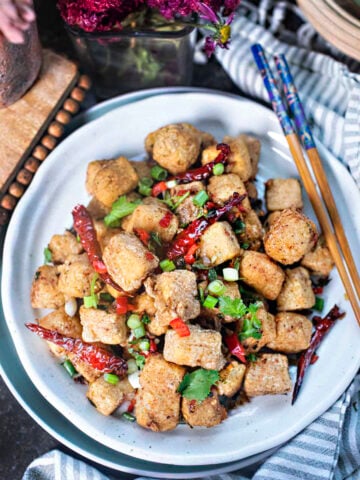
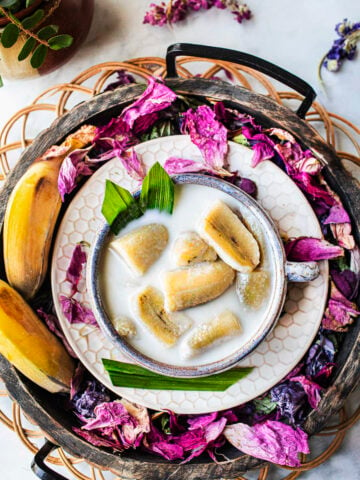
Leave a Reply